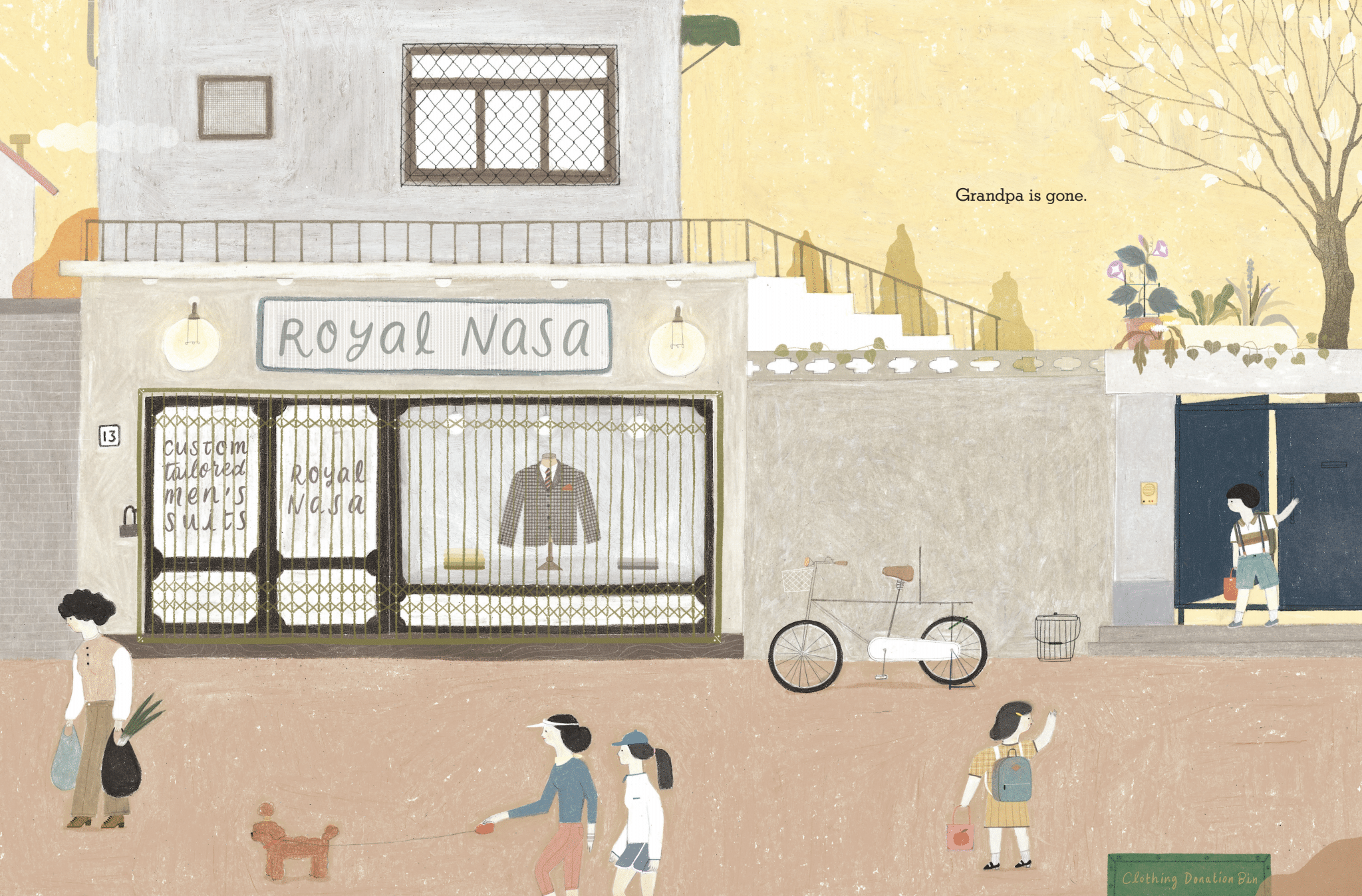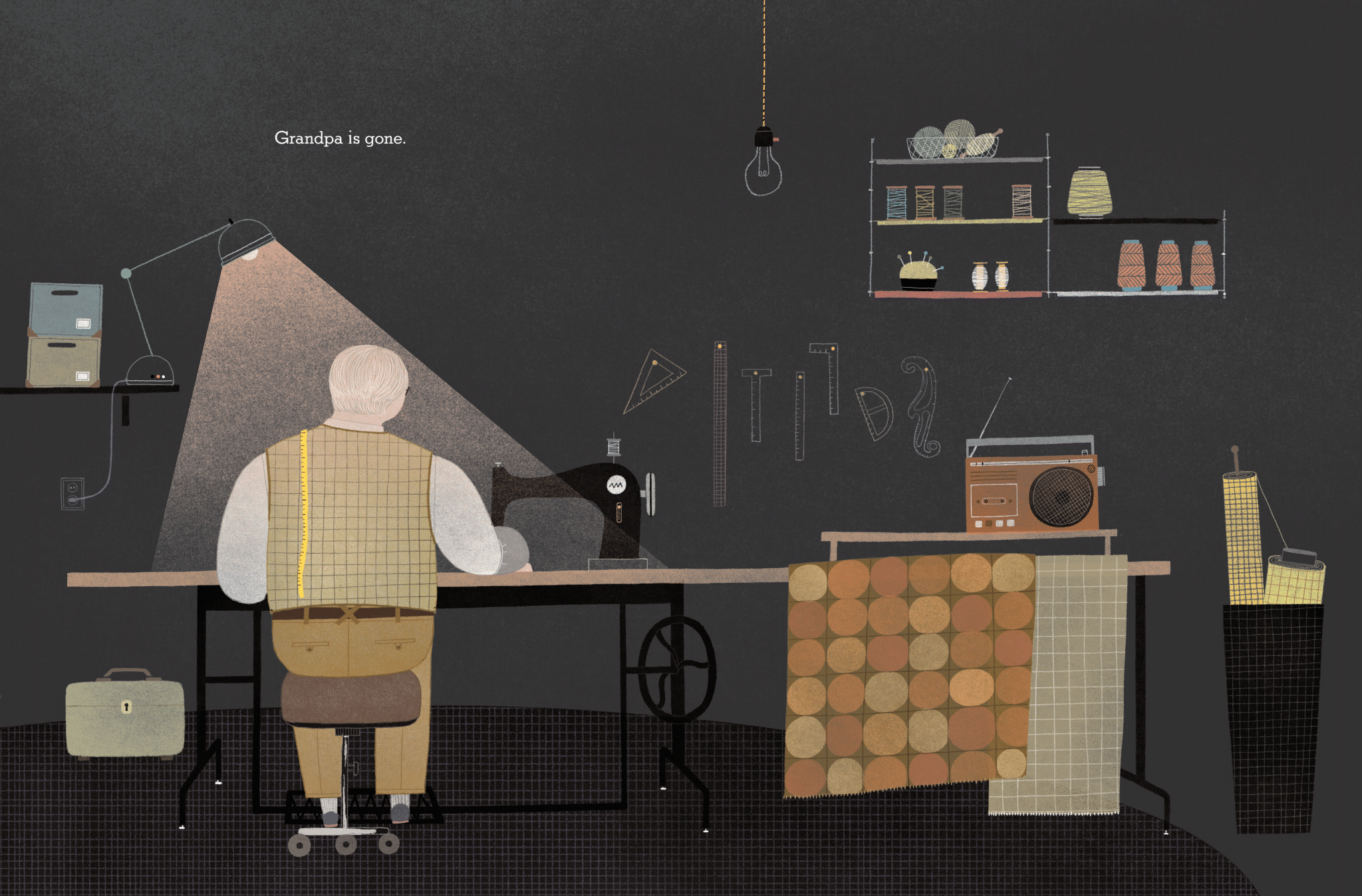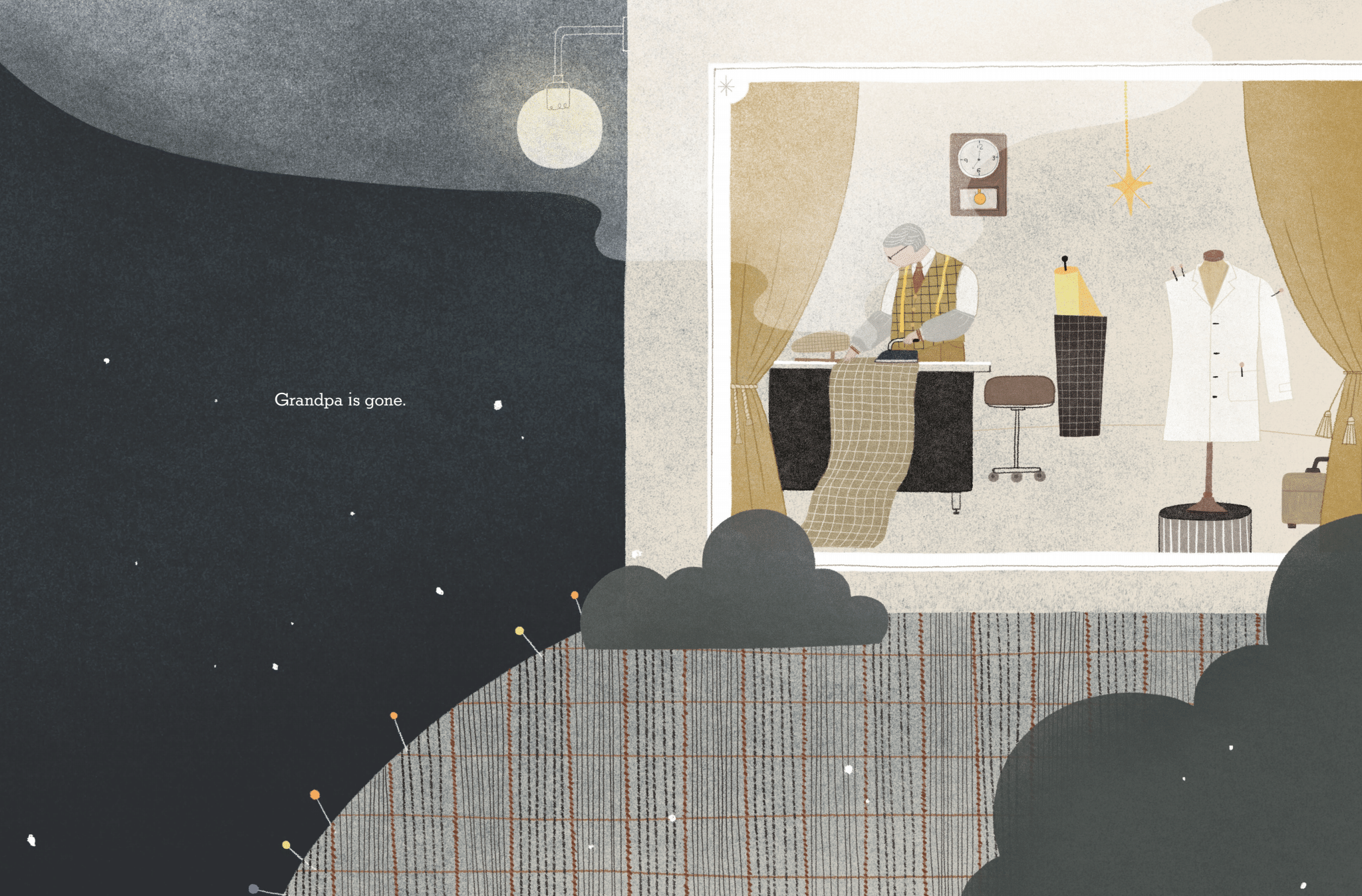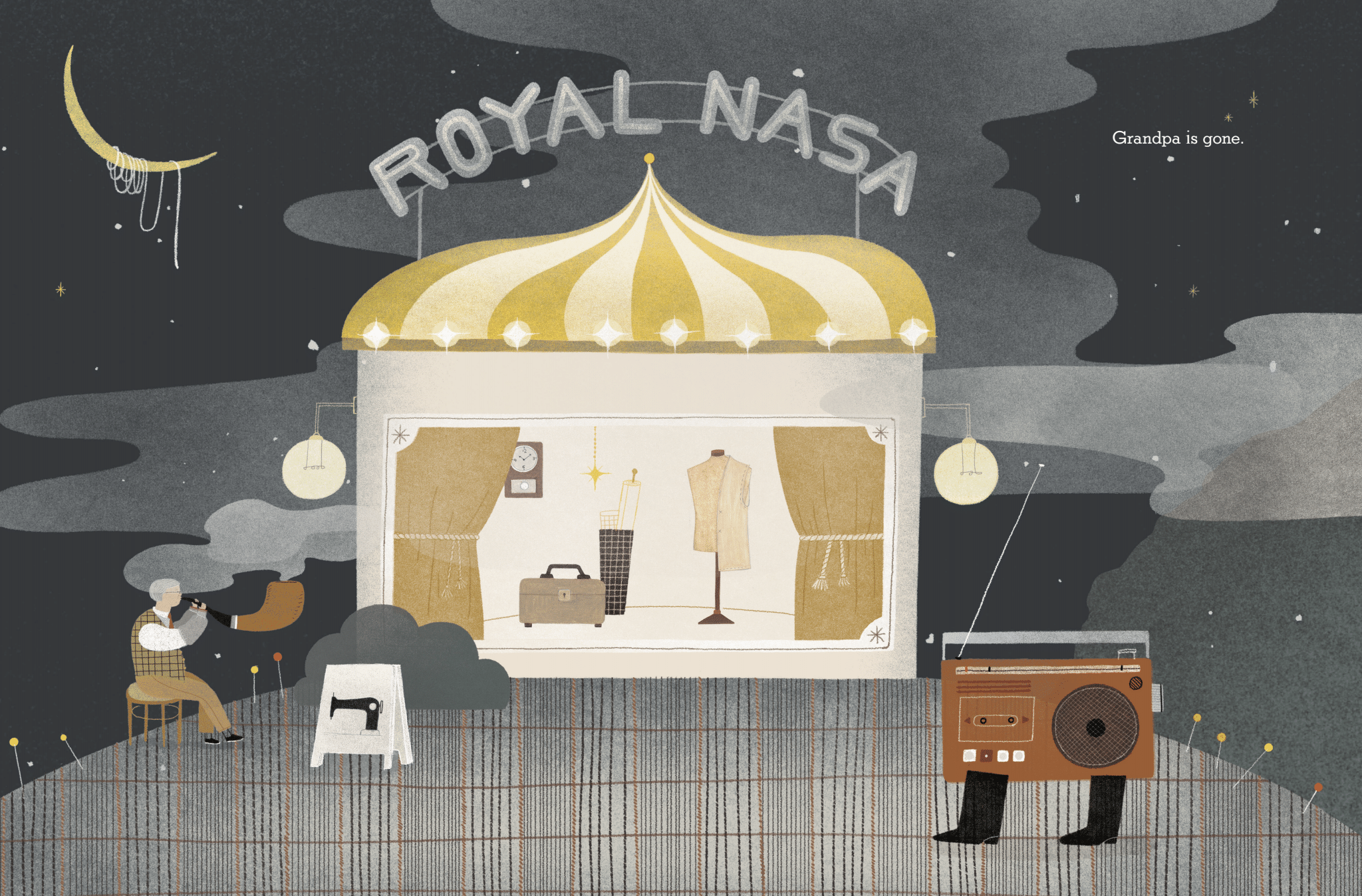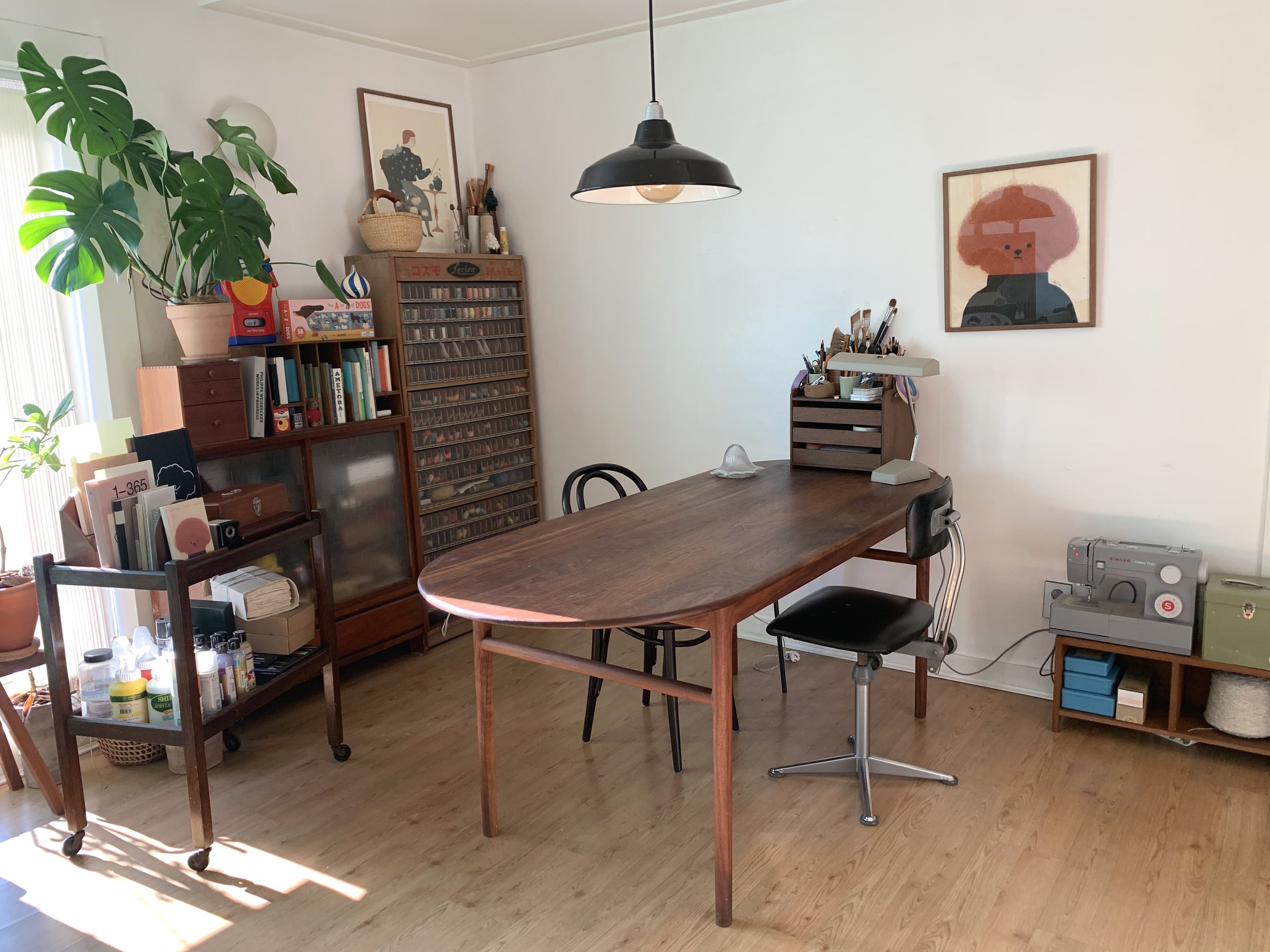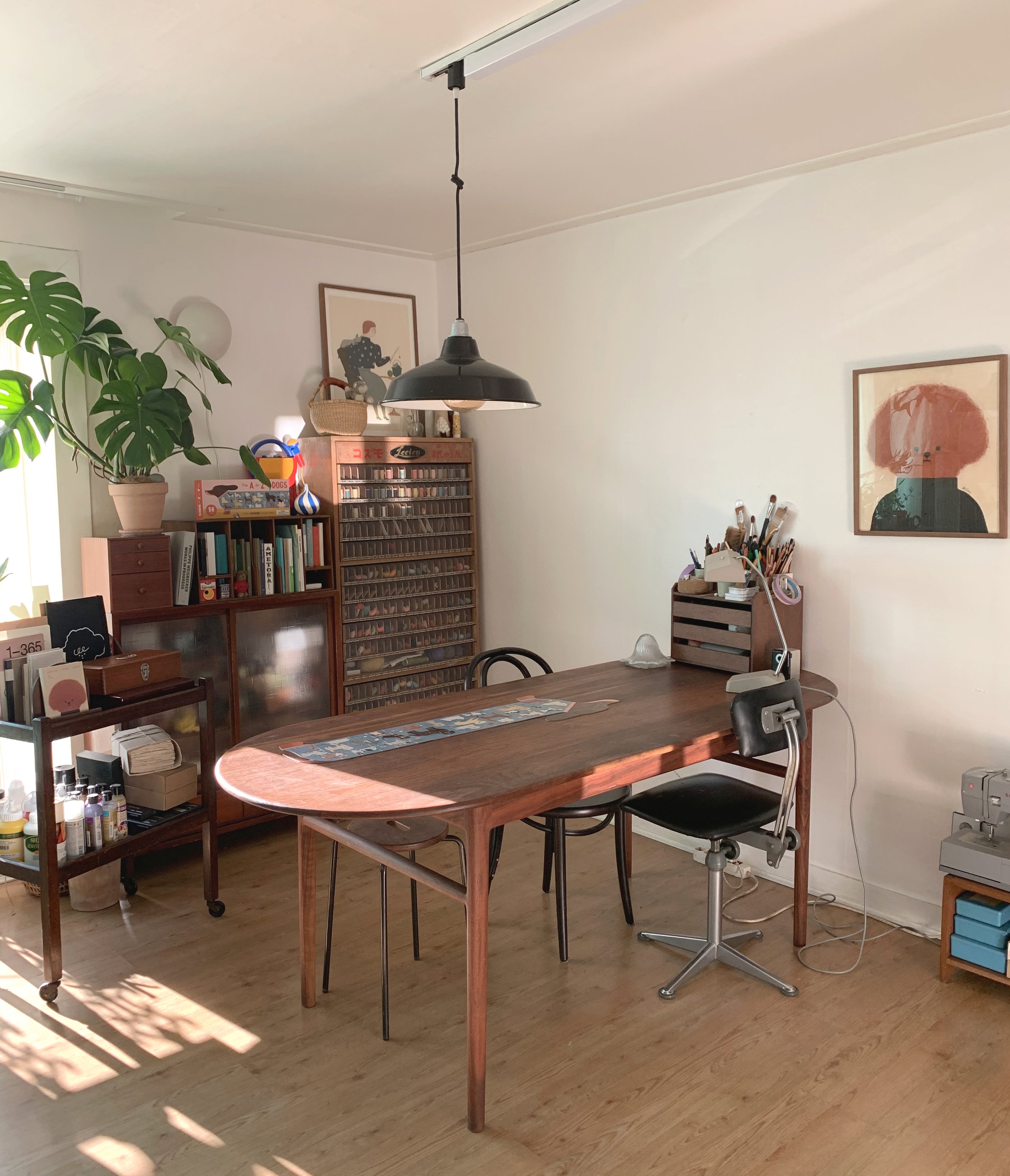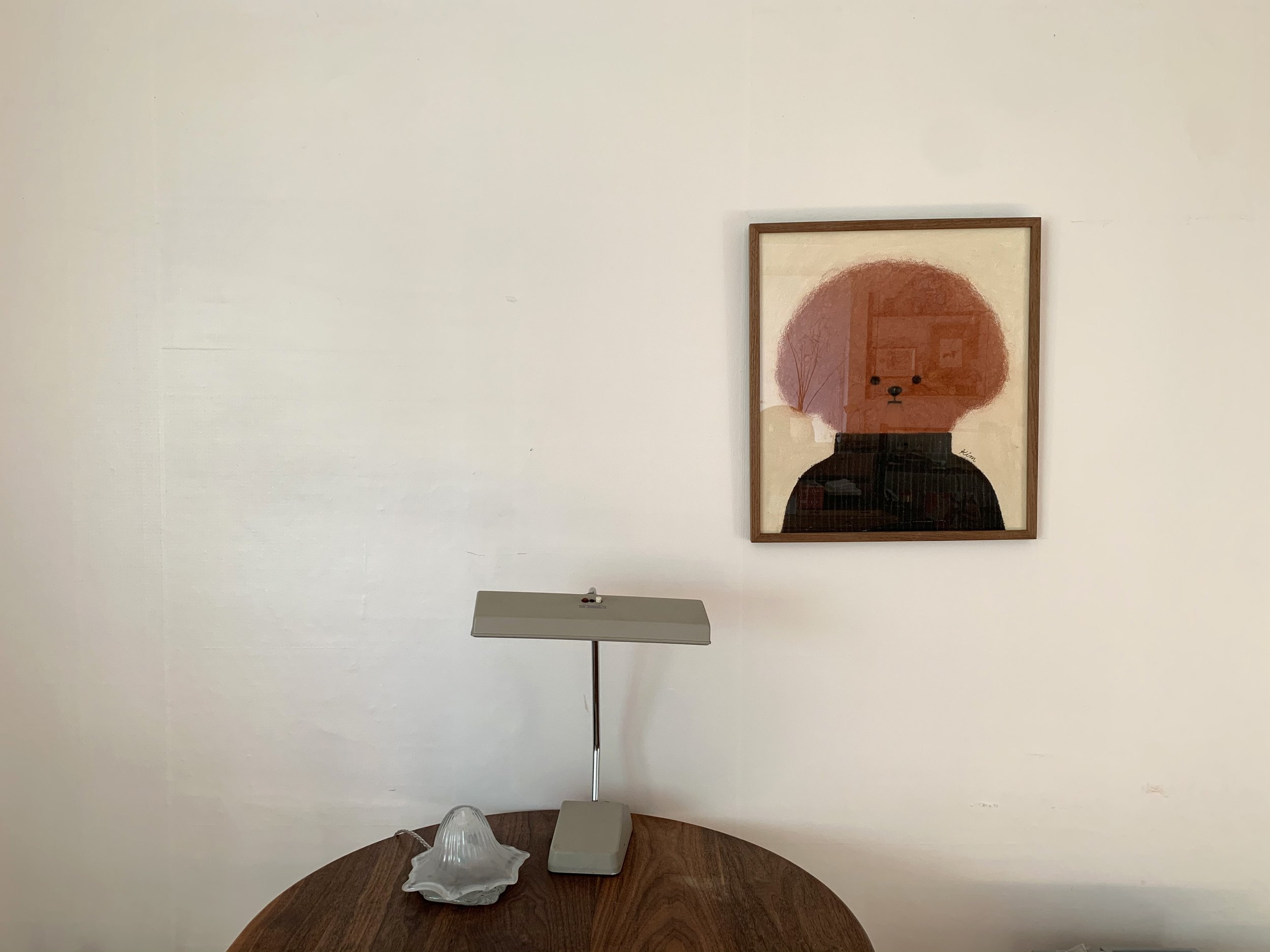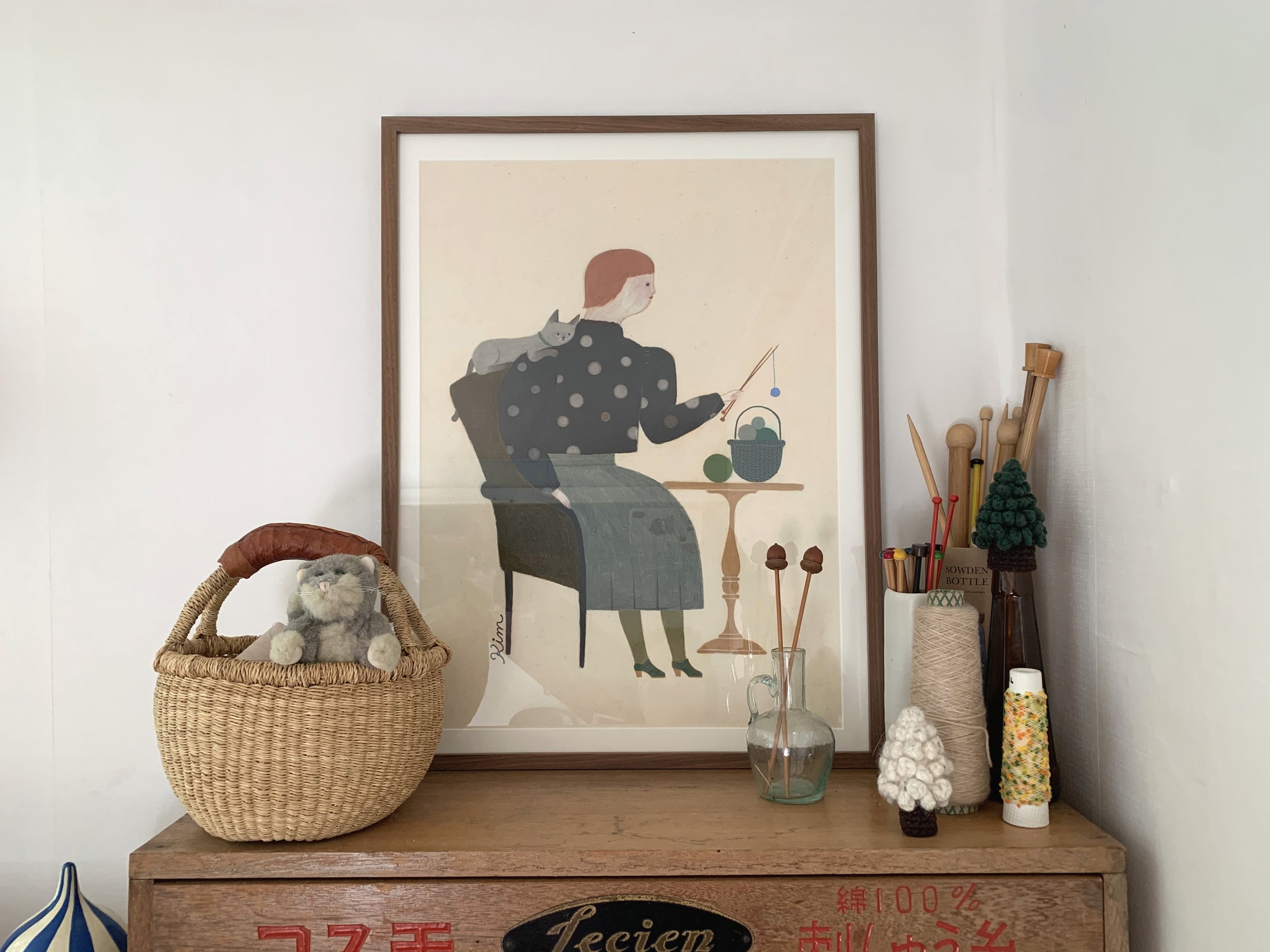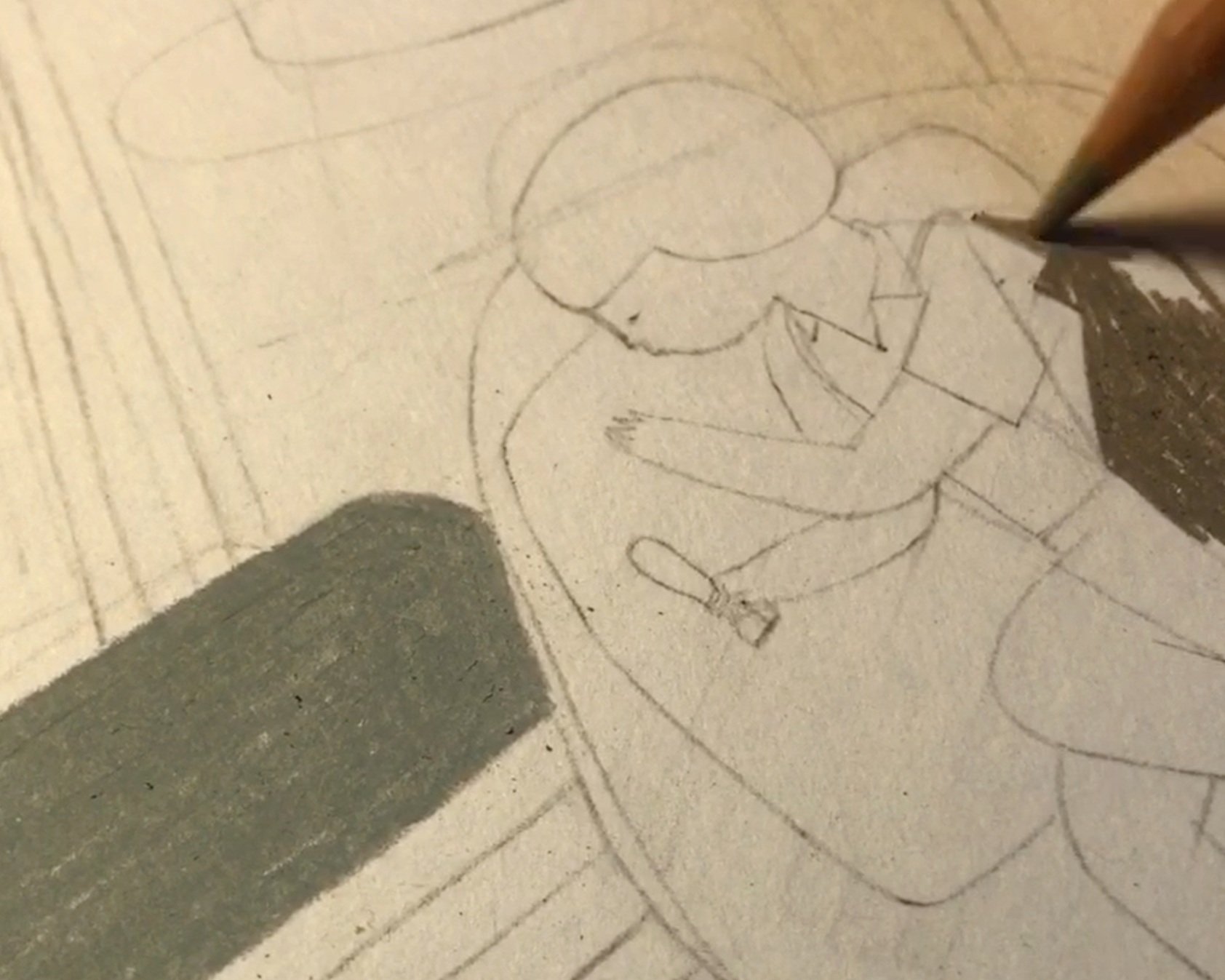A Q&A with the Author & Illustrator of ONE DAY
One Day is a gentle, delicately illustrated meditation on loss and connection, told from the perspective of a young boy who has lost a beloved grandfather. In interviews with Enchanted Lion, author Lee Juck and illustrator Kim Seung-youn discuss the voice of childhood, making absence palpable, and their personal conception of what lies beyond death.
Interview with Lee Juck, author of One Day
Enchanted Lion Books: What inspired you to tell this story? How did the idea for One Day first come to you, and how did it become a book?
Lee Juck: Just like everyone does, I had a hard time understanding the meaning of death as a child. I was frightened and tormented by it. Even now, I still don’t understand it. I wanted to tell the story of a child trying to make sense of death in his own way, and gradually coming to terms with it. I’d written some rhythmic verses over a decade ago, and after finding an illustrator, they eventually became this picture book.
ELB: In addition to writing children’s books, you are a celebrated singer, songwriter, and musician. How did this affect and inform the writing process of One Day? What was different between writing a picture book vs. writing a song, and what was the same?
LJ: When I write a song, the music usually comes first, which means I need to work under certain restrictions related to the flow of the melody or the number of notes. While the synergy created by music and lyrics is, of course, a wonderful thing, writing a book gives me more freedom in a way, because my starting point is a vast, blank sheet. Through books, I can also tackle themes that may be difficult to express through music. I see both books and songs as windows through which I can present the different voices inside me to the outside world.
ELB: How did you come up with the idea of the refrain: “One day, Grandpa is gone.” ? How did you choose this specific sentence to repeat? What does its repetition throughout the book mean to you, and to what extent do you feel like its meaning changes as it’s repeated in different contexts?
LJ: In Korea, when referring to the passing of an elderly person, we say that they’ve “gone back,” meaning they’ve returned to the place they came from. Since it’s such a common phrase, no one pays much attention to its literal meaning, but I wished to focus on the potential deeper meaning of this phrase in this story. (I think the English translation was possible because “being gone” can have similarly nuanced meanings in English.)
By repeating the sentence “Grandpa is gone” over and over, I aimed to emphasize how difficult it is for the boy to accept what has happened, and to show the emotional struggle he goes through as he tries to make sense of something he can’t even begin to understand. The refrain eventually leads to the boy’s moment of enlightenment: “Oh, so that’s where he’s gone.” So, by repeating the words “Grandpa is gone” in his mind, the boy finally understands death in his own way.
I must also mention that a musical sense of rhythm was important to me. I think that being a songwriter makes me highly sensitive to musical rhythm in writing.
ELB: One Day is narrated by a young boy who sorely misses his grandfather. How did you choose this perspective? How important was it for you to capture the voice of a child, and do you see this voice as something more universal, for children and adults?
LJ: As adults, we learn to think of death as a part of life, and we develop a sort of numbness to it. For a child, however, the death of a loved one is a strange, utterly inexplicable event that’s about more than just the absence of that person. What does it mean to not be able to see them again—forever? What does it mean for life to come to an end? Children must first attempt to answer these difficult, riddle-like questions; an overwhelming sense of sadness often follows. Many of us experience losing somebody we love for the first time in our childhood. I believe the voice of the boy in this book—the voice from our childhood—can strike a chord in everyone’s hearts.
ELB: How would you describe your personal conception of grief and loss? What role do you see the imagination playing in these difficult moments?
LJ: I believe that myths, legends, and religion came into being as a way for mankind to alleviate their grief, loss, and fear of death through stories and the imagination. No matter how far we’ve come with scientific progress, we still rely on our imagination to picture what it’s like after we die. I have no religion; that’s why I wrote this story. When I’m alone, I sometimes quietly say a few words to loved ones who are no longer with me.
ELB: What message do you hope One Day shares with its readers, young and old?
LJ: As we struggle with loss more than ever in the midst of a pandemic, I think it’s important for us to believe that the ones we love have gone back to the place where they came from, and for us to spend time praying that they rest in peace. I pray for those who have left us to be at peace, and I hope that readers find solace in this story.
Interview with Kim Seung-youn, illustrator of One Day
Enchanted Lion Books: When you are planning an illustration, what steps do you take to build the image? (Do you start by composing a more general sense of place, and fill in details? Do you start with one detail and build outward?) Are there parts of your image-making that feel more logic-driven, and others that feel more emotion-driven?
Kim Seung-youn: One thing I can say for sure is that as an illustrator, I am 100 percent emotion-driven. Since I continuously come up with new ideas as I work, it’s rare for me to follow a pre-designated plan. Even if I have an elaborate sketch, I might come up with a better idea during the coloring process. That’s why I sometimes choose to jump right into the coloring process without a rough sketch. When working on a book, I don’t follow the order of the story; I start with the scenes I want to draw first, the ones I have a clear image of in my mind. Though this method might seem inefficient, I continuously remain alert and search for better options as I go along, which lets me draw in ways I couldn’t have thought of at the beginning of the process. It’s an extremely emotion-driven approach, which I happen to like a lot.
ELB: What kind of environment do you like to have around you when you are making art? Do you have certain scents or objects, specific lighting conditions or a time of day, a favorite kind of music or sounds that you like to have around you?
KS: I like to work at night. When I’m just beginning a project, I find it helpful to keep my mind open by meeting different people and exposing myself to many beautiful things in pleasant atmospheres. Later, as the project progresses and calls for deep reflection, I tend to be less affected by my surroundings. At times, a little disorderliness can actually help provide me with a sense of stability.
ELB: For a book that explores the idea of loss, how did you go about making this quality of absence palpable visually? How did this change at different points in the book, when the grandson starts to search for Grandpa—and in a way, find him—with different senses and more imagination?
KS: For me, the theme of this book is the absence of a loved one (whether it be a family member or a pet) whose presence we’ve come to take for granted. I, too, experienced a loss like that one in my childhood. I remember how surreal it felt to go on eating as if nothing had happened, how the world went on as usual with total disregard for my personal tragedy. In the face of a reality that was difficult to accept, I found solace in daydreams and fantasies.
As the illustrator of this book, I think this experience helped a great deal. Coming back from school to an empty home, with all of Grandpa’s things still lying around the house... Through these images, I wished to convey the sense of being in the same space as the day before—but feeling as though your whole world has changed because someone important to you is no longer there.
ELB: The expansive feelings of this book are grounded in a very real sense of place and community. What inspired you to bring Grandpa to life as a tailor? What kind of references inspired you when creating the boy’s neighborhood, his home, the suit shop?
KS: My uncle-in-law was a tailor and had his own shop. As a child, I was fascinated by the tools—tape measures, scissors, chalk—I saw there when I went to visit. They were things I never saw at home, which made them all the more impressive. When I was young, my mother also owned a clothing store, which was attached to our house. I think these aspects of my background definitely served as inspiration for my illustrations.
ELB: How did you choose to illustrate the cosmic dimension of the picture book, with Grandpa continuing his tailoring work among the planets and stars? How would you describe your conception of an afterlife, and how does it relate to the space you created for Grandpa across the gatefold, where he is surrounded by others in similar modes of exploration and purpose?
KS: I like to think that after we die, we all become particles of dust in space. My wish is for the energy I carried within my body to be transferred elsewhere, and for myself to turn into dust, or nothing at all. As for the final scene, I recalled images from my childhood: my uncle-in-law’s shop, which I remember vividly, and scientists conducting research, which has never failed to fascinate me.
And now… Kim Seung-youn answers Enchanted Lion’s Ten Questions:
1. What are your favorite words?
KS: Puppy, furball, yarn, cute.
2. What are your least favorite words?
KS: Sharp, pointed.
3. Do you have any real-life heroes? If not, what do you most admire in other people?
KS: I admire all those who give of themselves for the good of others (not just people, but also animals and nature). I admire people who are truly generous and kind.
4. If you weren’t an artist, what would you most like to do?
KS: I’d like to be a bar owner.
5. Do you have a life motto?
KS: Feeling comfortable is the most important thing.
6. What is your idea of success?
KS: Being tired.
7. Which rituals part of your creative process?
KS: Taking walks, and lying on my bed.
8. What does procrastination look like for you?
KS: A journey to reach a destination.
9. How would you describe your monsters?
KS: Small objects made of dirt.
10. What is earthly happiness for you?
KS: Lying on my bed with my dog, Kim Ping-goo, on a sunny day with no work to do.
To learn more about One Day, visit its book page here. And you can watch the story come to life through the book trailer below!


